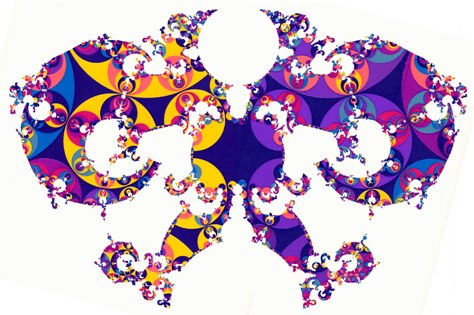Tomaschitz, R. (1995). Cosmological CP violation in the open universe, in: XX International Colloquium on Group Theoretical Methods in Physics (40th Yamada Conference, Toyonaka, July 4-9, 1994, A. Arima, T. Eguchi, N. Nakanishi, eds.) World Scientific, Singapore, 1995, pp. 479-482.
Abstract (CDS, SAO/NASA ADS, Zbl 0898.53066)
An account on the physical impact of a topologically and metrically evolving space-time is given. We discuss the appearance of a chaotic nucleus in the infinite and unbounded 3-space, topologically induced CP violation, the existence of faster-than-light particles, and their topological localization.
Zbl
0898.53066
Tomaschitz, Roman
Cosmological CP violation in the open universe
[A] Arima, A. (ed.) et al., Yamada conference XL. Proceedings of the XXth
international colloquium on group theoretical methods in physics, Toyonaka,
Japan, July 4-9, 1994. Singapore: World Scientific. 479-482 (1995). ISBN
981-02-2087-1/hbk
MSC 2000:
*53Z05
Appl. of differential geometry to physics
83F05 Relativistic cosmology
37N99 Applications of dynamical systems
Keywords: $CP$ violation; extended Robertson-Walker cosmologies; chaotic world lines; violation of space-reflection symmetry; topological self-interference; chaotic nucleus; faster-than-light particles; topological localization
|
Title: |
|
Cosmological CP violation in the open universe |
|
Authors: |
|
Tomaschitz, Roman |
|
Affiliation: |
|
AA(Department of Physics, Hiroshima University, Higashi-Hiroshima 739-8526, Japan) |
|
Publication: |
|
XX International Colloquium on Group Theoretical Methods in Physics (A. Arima, T. Eguchi, N. Nakanishi, eds.) World Scientific, Singapore, 1995, pp. 479-482. |
|
Publication Date: |
|
00/1995 |
|
Origin: |
|
AUTHOR |
|
Keywords: |
|
relativistic chaos, open Robertson-Walker cosmology, multiply connected hyperbolic 3-space |
|
Abstract Copyright: |
|
World Scientific |
|
Bibliographic Code: |
|

Fig. 1. The horizon at infinity of the Poincaré half-space H3. A spacelike slice (F,Γ) is realized in H3 as a polyhedron F with face-identification. The identifying transformations of F generate the covering group Γ which, applied to the polyhedron, gives a tessellation Γ(F) of H3 with polyhedral images. This tessellation induces by continuity also a tiling on the boundary of H3, that is depicted here. The qualitative structure of the singular set depends on Γ, for quasi-Fuchsian groups like here it is a Jordan curve, for Schottky groups a Cantor set, cf. Refs. 3 and 4. ((F,Γ) ~ I × S, S a Riemann surface, g(S) = 19, δ(Λ) = 1.45.) From the fractal limit set Λ(Γ), one can easily determine the chaotic or nearly chaotic trajectories, which shadow each other over long times. Their lifts have initial and end points in or close to Λ(Γ). Projecting them into the 3-space (F,Γ), one obtains the chaotic nucleus. Once the tiling is generated, it is easy to construct the covering projection, π(x): = γ-1(x), the point x lies in the tile γ(F). Likewise, a geodesic arc crossing a tile γ(F) is mapped by π via γ-1 into F. full size image
description: Roman Tomaschitz (1995) Cosmological CP violation in the open universe, in: 20th International Colloquium on Group Theoretical Methods in Physics (40th Yamada Conference, A. Arima, T. Eguchi, N. Nakanishi, eds.) World Scientific, Singapore, pp. 479-482.
Keywords: open Robertson–Walker cosmology, multiply connected hyperbolic 3-space, constant negative curvature, chaotic center of the universe, chaotic and nearly chaotic trajectories, shadowing, parity violation by topological self-interference, violation of the space-reflection symmetry, faster-than-light particles, space expansion and tachyonic world lines, topological localization of tachyons, open hyperbolic 3-manifolds, Poincaré half-space, universal covering projection, polyhedral tessellation of hyperbolic space, Kleinian covering groups, fractal limit sets of quasi-Fuchsian groups, fibered hyperbolic 3-manifolds, compact Riemann surfaces
download full-text article (scanned PDF, 0.8 MB)